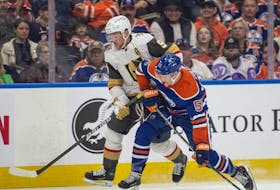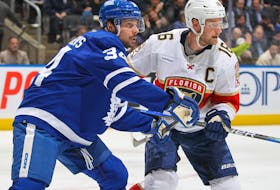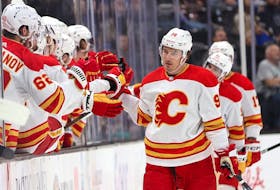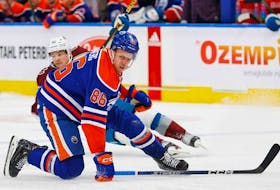Faced with the reality that tries are more entertaining but that teams were often settling for the less sensational penalty kicks, rugby officials decided 25 years ago to create an incentive for teams to really go for it — they created the bonus point win.
It’s been accepted in most of the world’s rugby competitions that if you score four tries in a match you’ve earned an extra point in the standings, win or lose.
For old school fans of the North American Soccer League, this rings familiar as the league had a wild system of awarding points based on goals scored, regardless of the final score.
Which brings us to these Vancouver Canucks, who are collecting points.
They have scored five or more goals in 13 games this NHL season.
That high-powered offence should be something other teams aspire to. Just imagine if the Canucks picked up bonus points there.
The Hughes/Myers duo
In a game that was a bit of a frantic mess, the offensively minded pairing was a standout for driving play.
They’re both very much in the new way of thinking about hockey, where their defensive talent really is about their skill at keeping the puck out of their own end as opposed to working as defensive stoppers in their own end.
“Both good players, both offensive-minded and Mysie is offensive minded, I think,” Travis Green said of the pair. “He’s learned what he has to do to play well at both ends. “Quinn just does what he does.”
Hughes was +16 in shot differential on the night at 5 on 5.
It’s a pairing that would be good to see more of.
Calder kid
Stayed differently: Quinn Hughes is amazing.
Let’s look way ahead: him winning the Calder would be the first time a team had back to back Calder winners since the Bruins had Bobby Orr in ’67 and Derek Sanderson since ’68.
(The Isles had Potvin/Trottier/Bossy in three of five years in the 70s, the Avs had Landeskog and MacKinnon in two of three years this decade.)
Horvat’s head
The captain had never been to the quiet room before.
“Feels like you have no contact with the outside world,” he said. He went through the standard concussion assessment protocol, where an athlete is asked a series of questions and asked to perform some basic tests, which are then compared to the athlete’s baseline stats that are taken in the off-season.
No issues came up and Horvat was actually returning to the bench when Miller hammered the goal home.
Why not more sweaters?
Warmup is a free-for-all when it comes to what teams can wear.
But in game action, teams are under some pretty strict league rules in terms of what they can wear. They have a standard home and away uniform, and then are allowed to have a third uniform, which they can wear up to 15 times per season. Usually teams wear their third uniforms at home becasue they’ll match the colour scheme of the standard home uniform.
In order to wear the black skate uniforms, the Canucks had to appeal to the league to be allowed to wear a fourth uniform. That’s why, for instance, they didn’t wear throwback uniforms from the 1970s, which they did to open the 2010-11 season. And it’s also why they didn’t wear the Flying V sweaters in the actual game on Saturday, just in warmup.
It’s a far cry from when the Canucks were one of several teams — the Rangers spring to mind — that had four or five sweaters they wore regularly over the course of a season.
Lighting bolts
Speaking of sweaters: personally I do like the Tampa thirds.
But you feel for your local play-caller.
Copyright Postmedia Network Inc., 2019








